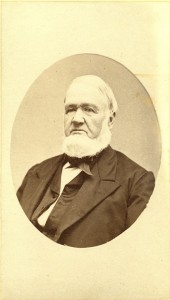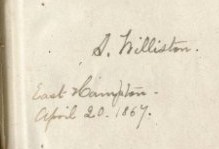 Ephemera: Things that exist or are used or enjoyed for only a short time; items of collectable memorabilia, typically written or printed ones, that were originally expected to have only short-term usefulness or popularity. Recorded in English from the late 16th century as the plural of ephemeron, from Greek, neuter of ephēmeros ‘lasting only a day’. As a singular noun the word originally denoted a plant said by ancient writers to last only one day, or an insect with a short lifespan, and hence was applied (late 18th century) to a person or thing of short-lived interest. Current use has been influenced by plurals such as trivia and memorabilia.1
Ephemera: Things that exist or are used or enjoyed for only a short time; items of collectable memorabilia, typically written or printed ones, that were originally expected to have only short-term usefulness or popularity. Recorded in English from the late 16th century as the plural of ephemeron, from Greek, neuter of ephēmeros ‘lasting only a day’. As a singular noun the word originally denoted a plant said by ancient writers to last only one day, or an insect with a short lifespan, and hence was applied (late 18th century) to a person or thing of short-lived interest. Current use has been influenced by plurals such as trivia and memorabilia.1
Samuel Williston is often presented as an ever- and over-serious, deeply religious, hard-driven New England entrepreneur. Much of this is probably true —though Samuel apparently worked hard at creating his own legend. (For a biographical essay, please read “The Button Speech.”) Occasionally we see glimpses of someone a bit more . . . well, human. His grandson, also named Samuel Williston, recalled “That he had softer feelings than might have been guessed from his manner, was indicated by his toleration of young children about the house, as well as by his habit of feeding daily with his own hands the family cat.”2
So Sam was a cat-lover. But there was also at least one dog, a black Newfoundland named Major. We still have the great man’s dog license. Strictly speaking, Major belonged to the cotton mill. And the town clerk had the temerity to charge Sam two bucks — about $30 in current terms — for the document. One wonders how many Easthampton residents would have paid this.
 Throughout his life, Samuel Williston kept a Memorandum Book in his office. It is a fascinating and valuable document — certainly warranting future exploration on this blog. It is full of business records, plans for improving water power for the mills and for expanding the Congregational Church, and much more. On a less lofty level, the following notes are inside the back cover:
Throughout his life, Samuel Williston kept a Memorandum Book in his office. It is a fascinating and valuable document — certainly warranting future exploration on this blog. It is full of business records, plans for improving water power for the mills and for expanding the Congregational Church, and much more. On a less lofty level, the following notes are inside the back cover:
 Apparently Sam thought he had a weight problem. So approximately once a month, beginning in May 1871, he had himself weighed on the factory’s shipping scales. By August 1872, he’d lost 32 pounds. Sadly, like many of us, he had trouble keeping it off.
Apparently Sam thought he had a weight problem. So approximately once a month, beginning in May 1871, he had himself weighed on the factory’s shipping scales. By August 1872, he’d lost 32 pounds. Sadly, like many of us, he had trouble keeping it off.
 Or imagine for a moment. It is Sunday morning. As they do every Sunday, Samuel and Emily Williston are attending services at the Payson (now Easthampton Congregational) Church, where, as befits the town’s leading citizen and the church’s principal benefactor, they are prominently seated in a front pew. As was the custom of the time, each member of the congregation has brought his own hymnal.
Or imagine for a moment. It is Sunday morning. As they do every Sunday, Samuel and Emily Williston are attending services at the Payson (now Easthampton Congregational) Church, where, as befits the town’s leading citizen and the church’s principal benefactor, they are prominently seated in a front pew. As was the custom of the time, each member of the congregation has brought his own hymnal. The Archives retain two copies of Songs for the Sanctuary, both with Samuel’s name — although in Emily’s handwriting.
The Archives retain two copies of Songs for the Sanctuary, both with Samuel’s name — although in Emily’s handwriting. So — we’re still imagining — the collection plate is being passed. Sam reaches for his wallet — and discovers that he’s left it at home. Hurriedly, he nudges Emily, fishes the stub of a pencil from his coat pocket, and scrawls on the flyleaf of his hymnbook:
So — we’re still imagining — the collection plate is being passed. Sam reaches for his wallet — and discovers that he’s left it at home. Hurriedly, he nudges Emily, fishes the stub of a pencil from his coat pocket, and scrawls on the flyleaf of his hymnbook: Human!
Human!
1The Oxford Dictionary of Phrase and Fable (2nd. ed.)
2Williston, Samuel, 1861-1963, Life and Law: an Autobiography (Boston: Little, Brown, 1940); p. 5.


That’s just delightful “ephemera” Rick. Growing up in Easthampton, Samuel Williston’s larger-than-life gravitas hung over us like a heavy curtain . But to see evidence of him going about his daily business with some of the same foibles as the rest of us has the effect of making him seem more–as you noted–“human.”